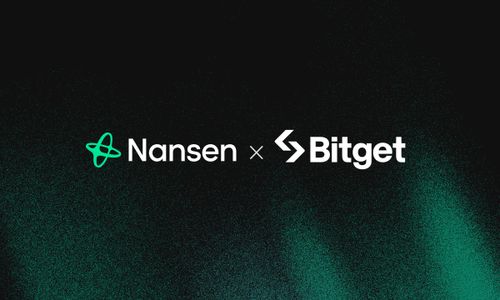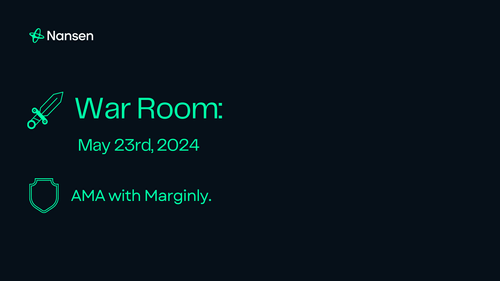What AO Computer Can Do
AO Computer, developed by the Open Access Supercomputing Foundation and built on the Arweave’s data storage, is a decentralized, hyper-parallel computing platform. It’s designed to host an indefinite number of parallel processes, interconnected via a native message-passing layer, aiming to create a single, unified computing environment. This setup is particularly suited for advanced applications like AI inference (e.g., via projects like aos-llama), decentralized finance (DeFi) (e.g., AMMs like Bark and Permaswap), gaming (e.g., Permaverse), and development tools (e.g., BetterIDEa). Its integration with Arweave’s permanent storage ensures data permanence, making it ideal for archival, censorship-resistant applications, and data-intensive tasks. The platform supports hyper-scalable smart contracts and autonomous agents, leveraging its modular architecture to plug into existing smart contract systems like Warp and MEM.
Closest Competitors and How It Stands Out
The closest competitors would probably be Internet Computer (ICP), which also aims for decentralized computing, and Solana, known for fast transactions. Although both competitors boast large theoretical max TPS (~200k and ~65k respectively), AO stands out with its hyper-parallel processing, theoretically letting unlimited processes run simultaneously. Furthermore, its integration with Arweave’s permanent storage, ensures that data can’t be lost. Its fair token launch might attract more users compared to competitors with pre-sales, offering a new way to build scalable, trustless apps.
Adoption Potential
The potential for AO’s adoption lies in its unique offerings:
- Decentralized and Trustless Computing: AO’s trust minimization and permissionless verification, with all computational states stored on Arweave, ensure data integrity and prevent tampering, appealing to developers and users seeking censorship-resistant solutions (A Deep Dive Into AO The Computer).
- Scalable Parallel Processing: Supporting an arbitrary number of processes running in parallel, AO offers theoretically endless scalability, making it suitable for data-intensive tasks and complex computations, aligning with current demands for AI and DeFi (A quick guide to AO).
- Integration with Arweave’s Permanent Storage: Leveraging Arweave’s permanent storage, AO ensures data permanence, a unique feature for long-term applications like archival and decentralized web hosting, potentially attracting projects needing durable data solutions.
- Fair Token Distribution and Economic Incentives: The fair launch model, with no pre-sales or allocations, and economic incentives like bridging rewards, attract a broad user base, fostering community participation and developer interest (Economics of the AO Computer).
- Growing Ecosystem with Diverse Projects: The presence of over 100 projects in various stages of building, spanning gaming, DeFi, and development tools.
Apps Building on AO and Ecosystem
The network’s $700 million bridged assets and 1.5 billion testnet messages signal robust adoption potential - although the bridged assets are very heavily incentivized with token emissions.
Over 100 projects integrated pre-mainnet, including Permaverse (gaming hub), BetterIDEa (web IDE), AOX (cross-chain bridge), and AMMs like Bark and Permaswap. Expect growth in AI and DeFi applications, with tools like CosmWasm enhancing interoperability.
Recent Developments
Several significant milestones have marked AO’s recent progress:
- Mainnet Launch: On February 8, 2025, AO Mainnet went live, following a successful testnet phase with over $700 million bridged and 1.5 billion messages processed (AO Mainnet Launches). This marks the transition to mainstream adoption, with native tokens becoming transferable.
- AO-Core Launch: On February 9, 2025, AO-Core was launched, introducing native tokens and marking the beginning of community-operated mainnet nodes (Economics of the AO Computer).
- HyperBEAM Implementation: HyperBEAM, AO’s new node implementation, became generally available, with early access for mainnet Milestone 2 enabling nodes on Trusted Execution Environments (TEEs), enhancing functionality (A Deep Dive Into AO The Computer).
- Payment Features Live: On March 15, 2025, AO’s payment system is live, enabling easy decentralized transactions for creators to build and monetize apps without third-party permission.
- PI Token Launch: On March 14, 2025, the Permaweb Index (PI) token was launched, coinciding with Pi Day, offering users more yield options in AO, AR, or PI tokens (Arweave to Launch PI Token). Minting began, with a fair launch platform expected in Week 2 and full distribution by Week 4.
Upcoming Plans
Future developments include the ongoing PI token launch, with a fair launch platform going live in Week 2 (around March 21, 2025) and full token distribution by Week 4 (around April 4, 2025). The project is likely to focus on network expansion, potentially integrating with other blockchain ecosystems, given its modular architecture.
Tokens and Trading
The AO and PI tokens are integral to the network’s operations:
- AO Token:
- Supply and Distribution: AO has a total supply of 21 million tokens, following a Bitcoin-like economic model with a four-year halving cycle. Tokens are distributed every five minutes at a monthly rate of 1.425% of the remaining supply (Economics of the AO Computer). Initially, 100% of tokens minted from February 27, 2024, were granted to AR token holders based on balances every five minutes. Going forward, 33.3% is minted to AR holders, and 66.6% is allocated for bridging assets to incentivize economic growth.
- Use Case: AO tokens secure message passing within the network and are used to incentivize economic activity, such as bridging assets. Users can earn AO tokens by holding AR or depositing assets like stETH/DAI, with options to receive yield in AO, AR, or PI tokens.
- Trading: Currently, AO tokens are traded on Permaswap, a decentralized exchange on the AO network, and listed on MECX (albeit with almost negligible volume or liquidity depth). Users can acquire AO by bridging assets from other chains (e.g., AR, USDC, USDT) and swapping on Permaswap (How to Buy $AO).

- PI Token:
- Launch and Distribution: Launched on March 14, 2025, the Permaweb Index (PI) token allows AR token holders and those depositing stETH/DAI to customize their yield, receiving it in AO, AR, or PI tokens (Arweave to Launch PI Token). Minting began, with a fair launch platform expected in the following weeks.
- Use Case: PI enhances yield flexibility within the Arweave ecosystem, particularly for the Permaweb, which is the permanent, decentralized web layer. It’s designed to incentivize participation in the storage and indexing aspects of the network, offering a diversified collection of assets including AR, AO, and fair-launch ecosystem projects.
- Current Status: As a new token, PI is in its initial distribution phase, with limited information on trading availability, indicating it’s early-stage and focused on ecosystem integration rather than immediate market trading.
The Farm
As mentioned before, you can deposit DAI or stETH into the pre-bridge contract to earn AO tokens or PI tokens. Let’s take a closer look whether it is worth it or not. Some economic considerations:
- DAI and stETH are no coincidence, they are highly liquid assets with native yield. DAI has an ingrained savings rate, stETH itself is a yield bearing asset.
- You forsake your native yield by depositing those assets.
- AO is a emitted at a transparent rate and is tradable immediately. You get what you get and there is no incalculable risk of getting retroactively diluted like with points farms. The emission of AO is predictable and transparent.
What this ultimately boils down to is that you use your native DAI or stETH yield to DCA into the AO token. This is generally a worthwhile consideration if:
- You think there will be a prolonged time of low AO prices before it eventually goes up (DCA becomes a viable strategy):
- Adoption potential, recent and future development (see above).
- Not yet listed on any major CEX, indicating more upwards price potential in case of listing if adoption and interest rise.
- Fair launch and no large unlocks upcoming.
- Market cap currently at ~$89m, putting it on the cheaper side of actually working computing network / AI adjacent projects.

- AO rewards at current prices are considerably higher than native rewards (farming and putting capital at risk instead of just DCA-ing on the market becomes a viable strategy).
- DAI: ~6.5% native vs ~17% AO
- stETH: ~3% native vs ~7% AO

Risk Considerations
As in every opportunity, this farm also doesn’t come without risks:
- Smart contract risk: Low, the deposit contract is as straightforward as it gets.
- Rug risk: Low, the project has close ties to Arweave which has been proven for years to be legitimate.
- Dilution / economic risk: Medium, somewhere in-between points programs and Pendle PTs. On the one hand, emissions and current yield are very transparent (unlike points programs), on the other hand future yield also depends on TVL (unlike e.g. Pendle PTs) which is uncapped and can always change at a moments notice.
Nevertheless, it is always a good idea to keep track of suspicious activity using Nansen:

With points farms being the norm but airdrops delayed due to market conditions, dilution of unknown magnitude is prevalent and there is actually “no rush” to farm those points now (if points are distributed linearly to provided capital). These same market conditions and mechanisms drive down the fixed rates on Pendle, which reflect the market’s outlook on future yield. Additionally, with Pendle you even incur risk of short-term loss in case of exiting a vault before expiry (e.g. because you need liquidity to enter back into the market).
In those times, farming a liquid token with stable or long-term hold assets like DAI and ETH without lockup not only offers a great and timely opportunity risk-wise, but also is a good long-term strategy to accumulate a token you have conviction in and sell it in the next pump.
For me, AO matches all these criteria and is exactly what I am looking for in a farm outside of the bull-market. You even have the possibility to split your yield into AO and PI tokens, giving you more exposure to the AO ecosystem itself and possibly a higher Beta.




